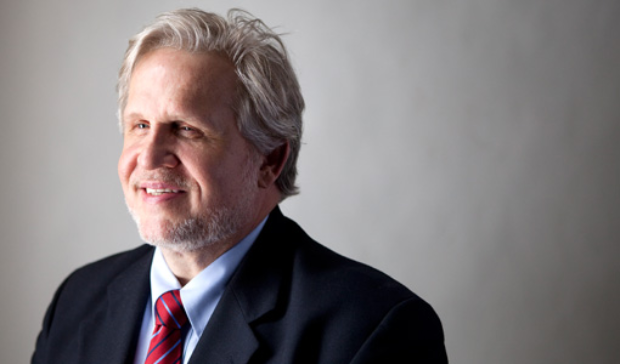Some have been calling the last 18 months the “Great Recession.” Movement in the markets seems to indicate it is coming to an end. Do you agree?
Most of the data I’ve seen clearly indicate we’ve been through the greatest recession since the Great Depression.
Is it over? That’s the $64 million question. My guess is that this recession is or will be U-shaped. That is, it was pretty steep on the way down, there will be a long, flat bottom, then an increase. But we probably won’t see the end of this until 2014 or 2015 – that’s how long it will take to get back to where we were in 2007.
If the economy is improving, what accounts for the often dramatic fluctuations in the stock market?
I’m a strategic investor, not a tactical one. From a strategic perspective, markets are driven by the underlying earnings of a company over a five- to 10-year period. In order for a stock to perform well from a strategic perspective, corporate earnings have to improve relative to stock price.
In the short term, what drives the market is speculative investor behavior. When investors think that everyone’s making money, they get greedy. There’s then more capital and static supply, driving the price up. The reverse is also true. When they see the market go down, speculative investors become fearful and pull their capital out. So, how does a strategic investor approach the market?
A strategic investor looks at relative performance ratios, such as the Price/Earnings (P/E) ratio – the price of the stock compared to the earnings of the company. Before 1990, the P/E ratio in the United States averaged 13 to 14. In the last 20 years, however, that number has been closer to 18 or 19. In 2000, it averaged closer to 30. This meant that you paid $30 for every $1 of earnings – a three percent return. Historically, $1 of earnings has provided a 6 to 7 percent return.
The proper P/E ratio in our current service-based economy is thought to be about 16 to 17.
What is it today?
It’s just a little bit above that. So that means the stock market is only a little high. It’s in an acceptable range at the moment.
As a strategic investor, this means that I’m not buying or selling. It means that the U.S.. stock market is appropriately valued. If I were seeing these ratios at 30 to 40, I might be taking money out early…and I did in the late 1990s. And if I saw those ratios down to 6 or 7 – which they were in the early years of the 1980s – I might get in.
From a long-term perspective, I’m happy with where the market is today.
Some blame the meltdown on uneducated investors. How do we go about creating better educated, strategic investors to ensure we don’t repeat the mistakes of the past?
It will require a huge cultural shift. First, we need to reregulate the financial service industry. People are going to say, “Sullivan, this is a terrible thing, we have to have a free and open economy.” My answer would be “No, we have to protect capitalism from itself, and we have to protect the banks and investors from themselves.” The total absence of regulation from 2001-07 is what got us in this mess.
We need to restructure our 401(k) and 403(b) systems to prevent plan owners from making bad decisions. Almost every piece of research on tax-deferred retirement plans shows that individuals make the wrong decisions.
If you look at institutional investors, we’re doing fine. Yes, we lost money in fiscal year 2009, but we made money in the last six months of calendar year 2009. This is because we “rebalance.” Say, for example, we determine to have 50 percent invested in stocks and 50 percent invested in bonds. If stocks perform better than bonds, then at some point more of our funds will be invested in stocks. So we sell off the surplus in stocks and put that back into bonds. This forces you to buy low and sell high – which is exactly what you’re supposed to do!
How does the average individual investor tend to react?
The exact opposite. They see everyone getting into the market and jump in – high. Then they see everyone getting out of the market and they get out – low. The simple practice of rebalancing forces us not to react to short-term market trends.
We also need to rebalance the reward for risk. During the bubble, investors were taking inordinate risks and getting very little reward. The reward should be relative to the unit of risk.
What has to change from a financial industry perspective?
We need to change compensation – stop rewarding those who take egregious risks then walk away with millions while the institution or system collapses around them. During the first six years of this decade, the CEOs in the seven leading U.S. financial institutions made almost $900 million – and guess what happened to those institutions? Three are out of business. The remaining four almost failed. And guess how much of this $900 million was given back? Zero.
Finally, we need international financial regulation. Big financial service firms are global firms and move money around the world. Unless we create this regulation now, we will – as George Soros said – do it later after the next financial collapse makes this one look small.
We need to recognize that it really is a global economy and banking system and that we’re all in this together. More than one half of the S&P 500 earns 50 percent of its profits outside the United States. I tell my students that the Atlantic and the Pacific are the same as the St. Croix and the Red Rivers: If we don’t want to do business in the Slovak Republic, then we shouldn’t be doing business in Wisconsin.
Where should the average investor start?
Build an asset allocation based on your stage in life – not just age, but the security of your job, your partner’s job, any pension you may have. Based upon this, find the funds that offer the lowest cost option and represent all asset categories – stocks, bonds and real assets such as real estate and commodities.
Go global. At least half of your stocks should be outside the United States. Most of your bonds should be in the United States because they’re the safest in the world. Real assets should be primarily non-U.S.
Stay rebalanced. If you really want to play around, do so with just five percent, but consider it no different from taking five percent of your money and going to Las Vegas or buying a lottery ticket. It’s about the same.
Always think long term.
But it’s so easy to get caught up in the daily financial news.
Whatever you do, don’t watch the stock market. Turn off the financial news. Try to keep yourself educated about the economy and the global environment. Stop trying to play the hot pick.
I believe in the human spirit. I believe in capitalism. I believe that if you give people a chance to succeed, they will. I think that very slowly and very strategically we’ll continue to expand and come out of this mess.





